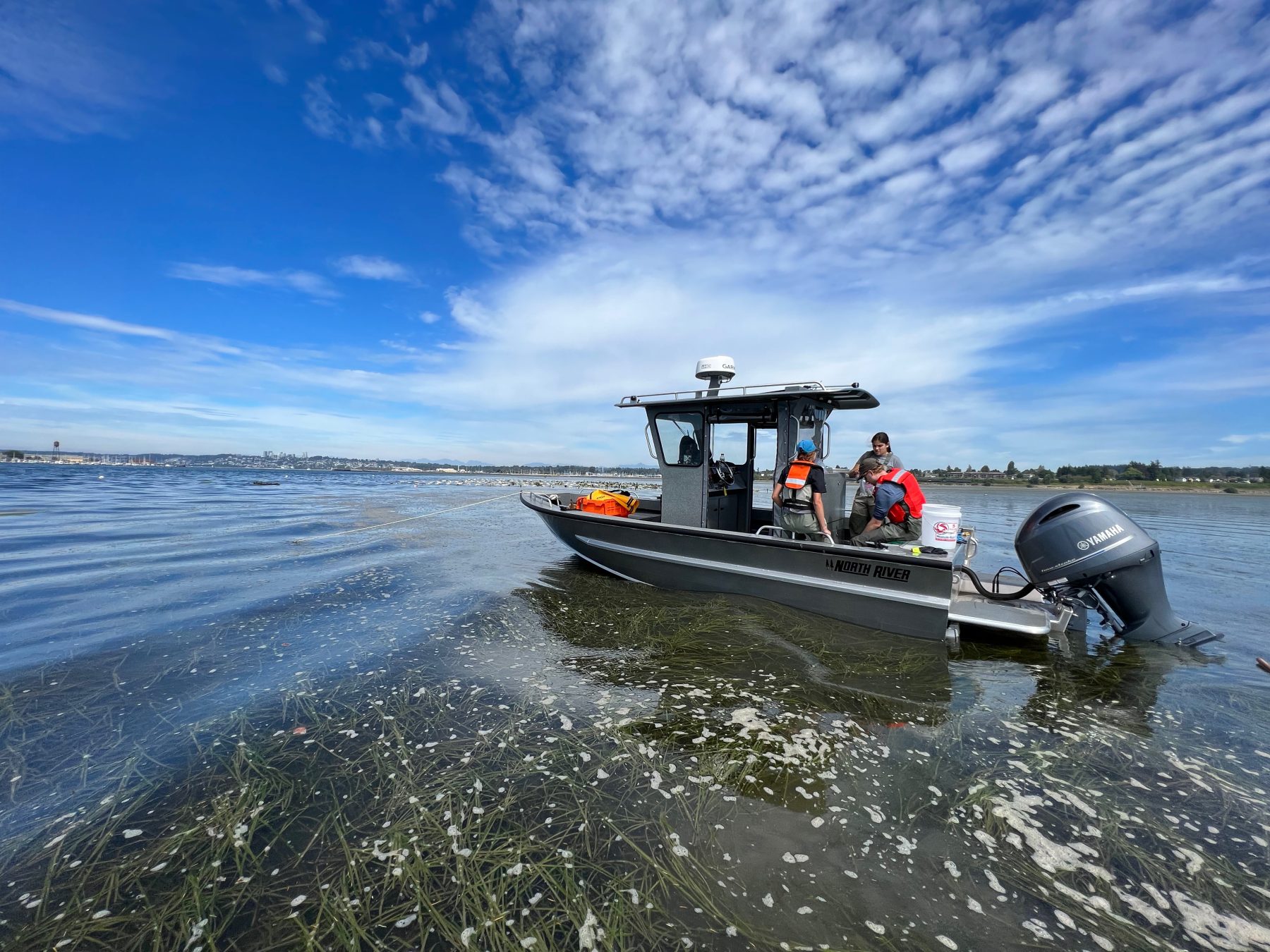Summer fieldwork in the Salish Sea
What fieldwork did the Applied Ecology Lab get up to last summer? Mark Scheuerell, Associate Professor at SAFS, shared insights into Washington’s aquaculture and some of the research underway at his lab.
Washington is the nation’s leading producer of farmed clams, oysters, and mussels, contributing nearly $200 million to our economy and supporting over 1900 jobs. Accordingly, there is demand for growth within the shellfish aquaculture industry, but a key impediment to doing so sustainably is that we don’t have a firm grasp on the ecological implications of converting nearshore habitat to shellfish production.
Therefore, we want to know how shellfish aquaculture functions as nearshore habitat, relative to uncultivated areas, with the aim of helping resource managers overcome this barrier and assess potential tradeoffs when planning the sustainable expansion of shellfish aquaculture.
One of our goals is to quantify the potential impacts of shellfish aquaculture on foraging by fish and crabs. Karl Veggerby, a grad student in my lab, and I have been collaborating with scientists from NOAA to examine food sources for fish and crab species commonly found in areas within and immediately adjacent to shellfish farms, and then contrasting those results to our findings from an area without shellfish aquaculture, Padilla Bay National Estuarine Research Reserve.
The photo below shows us in August 2022 of our lab group working with our community partners at the Drayton Harbor Oyster Farm to sample fish and crabs inside and adjacent to their commercial shellfish aquaculture site near the Canadian border.
